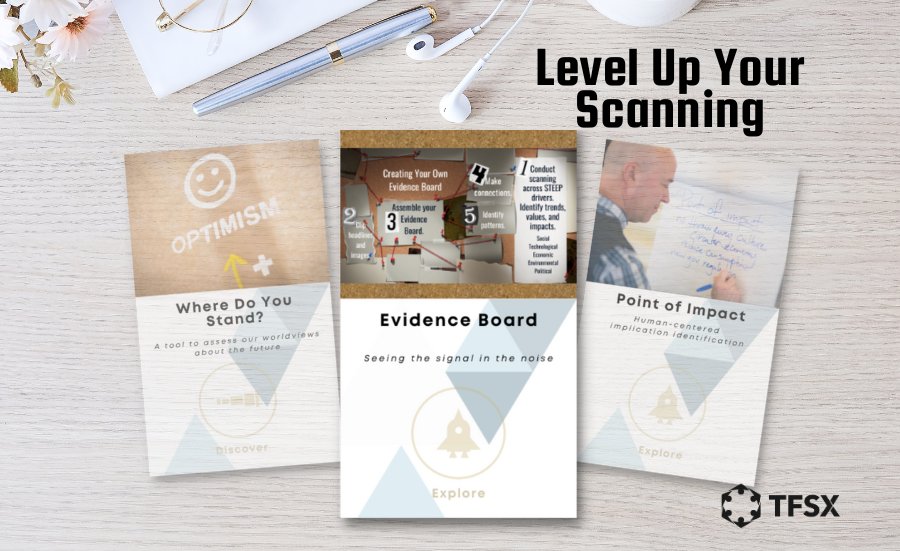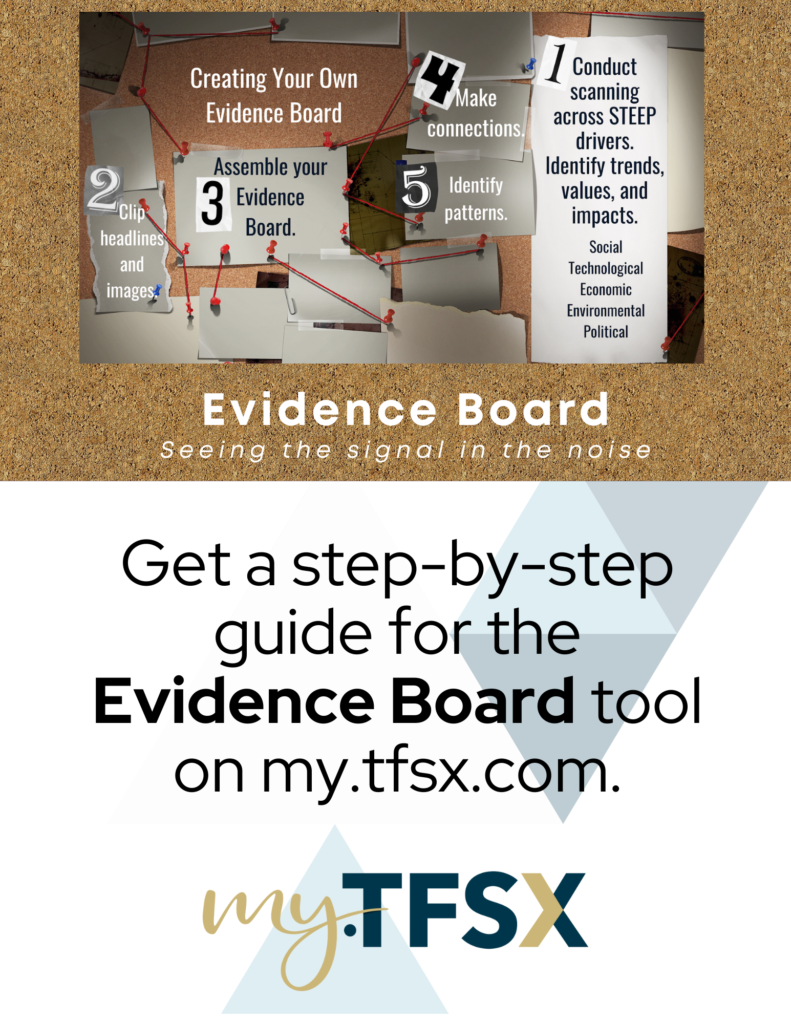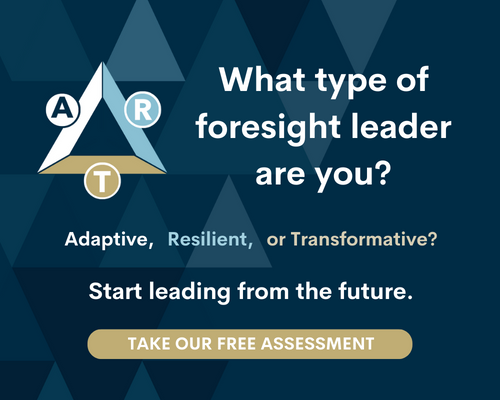Tool Spotlight – Level Up Your Scanning

What Can Crime Investigations Teach Us About Futures Intelligence?
What does hunting for a killer have in common with hunting for signals? I’m so glad you asked! If you’ve watched any crime dramas or murder mystery flicks then you know the fearless detective always ends up standing in front of an evidence board, meticulously stretching yarn across push pins, noting connections between seemingly unrelated data points.
Why Must We Make Sense Of Our Trends?
A key point of differentiation (there are others) between a futurist and a trend hunter is that foresight professionals are pattern and sensemakers. This means they don’t just “collect the dots,” they “connect the dots!” A foundation of robust scanning across STEEP (social, technological, environmental, economic, and political) domains is critical, as is the identification of value shifts and implications; however, once you have all of those data points (or “evidence”), then it’s time to make sense of it.
Trends can be our worst enemy because they often act as bright shiny objects, blocking us from seeing what is actually emerging. Trends represent the present (that’s why we can see them!!), so they must be analyzed to be useful in our foresight efforts. Understanding the collision of trends, value shifts, and implications allows futurists to identify EMERGING LANDSCAPES OF CHANGE, or what we call “patterns” for short. These are the collection of our futures intelligence that are just beginning to take shape on the horizon (emerging), but they are far larger and more significant than a single trend (landscapes), and they represent what’s coming next (of change). Patterns are powerful because they have significance across all focal issues and industries.
How Do I Become A Pattern And Sensemaker?
Becoming skilled at identifying emerging landscapes of change takes practice, and it requires that you maintain a robust scanning practice. Here are some tips, tools, and resources to support your evidence-based pattern making efforts:
- Scan, Scan, Scan: You can’t connect the dots until you collect the dots. Use this resource to ensure your scanning is robust.
- Jumpstart Your Scanning Practice: Leverage this set of trend cards to seed your scanning. Each card describes a trend (with sources) and includes value shifts as well as possible implications — everything you need to make connections across your “evidence.”
- Create Your Evidence Board: Use your futures intelligence to create your own evidence board (digital or physical). Each trend, value shift and implication is a piece of evidence. Use push pins and yarn (or digital post it notes and lines in a Mural board) to connect ideas. Stand back and the patterns will begin to emerge. For a step-by-step guide to creating your evidence board (along with 30+ other tools), subscribe to my.TFSX!



